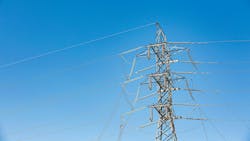California Energy Leaders Assess Grid Readiness for Summer 2025
At the annual Summer Energy Reliability Workshop, officials from the California Energy Commission (CEC), California Public Utilities Commission (CPUC), California Independent System Operator (California ISO), other state agencies and partners in the energy and utilities industry assembled to assess readiness for the summer and strategies to manage extreme weather and potential grid challenges.
California energy leaders are encouraged by recent progress and believe that the state is well positioned to meet demand in summer 2025, while remaining vigilant about ongoing risks. The state has taken actions over the past five years to confront grid reliability challenges exposed by climate change.
- More than 20,000 MW of new clean energy supply have been added since 2021.
- Battery storage capacity statewide, including residential, commercial, and utility-scale installations, has increased more than 13,000 MW, up from about 700 MW in 2020. This allows for solar and wind energy captured during the day to power homes and businesses in the critical evening hours.
- The Strategic Reliability Reserve, established by legislation after challenges in 2020 and 2021, provides 4,000 MW of backup resources, including cleaner options like demand response programs and virtual power plants.
- The extension of operations at the Diablo Canyon Power Plant provides additional capacity during the clean energy transition, providing stability while new renewable resources and storage continue to come online.
- State energy agencies have improved forecasting, coordination, and operational strategies to better manage complex situations.
- Coordination with regional partners across the west, including the Western Energy Imbalance Market, continue to enhance grid reliability.
In 2024, California achieved 100 percent clean energy in the California ISO service area every three out of five days, as the California ISO system reached 100 percent clean electricity for a period of the day on 219 different days. Solar energy output reached 19,600 MW, and battery discharges were at 8,000 MW in October 2024.
The state did not issue a single Flex Alert in 2024, despite periods of extreme heat in 2024, demonstrating the effectiveness of recent investment and coordination. Officials are concerned about the Westwide heat events combined with sudden disruptions, such as wildfires impacting transmission lines, to create tight grid conditions.
“California’s grid is better prepared for extreme heat, but when multiple climate-driven events happen at once, the system could be pushed to its limits,” said California ISO Chief Operating Officer and Senior Vice President, Mark Rothleder. “That’s why we remain vigilant and continue refining our emergency response playbook in light of new information and changing conditions.”
Officials also highlighted the role of consumer engagement in grid stability. Programs like Power Saver Rewards and public awareness of peak demand hours have helped reduce strain on the system, reducing the need for Flex Alerts in recent years.
